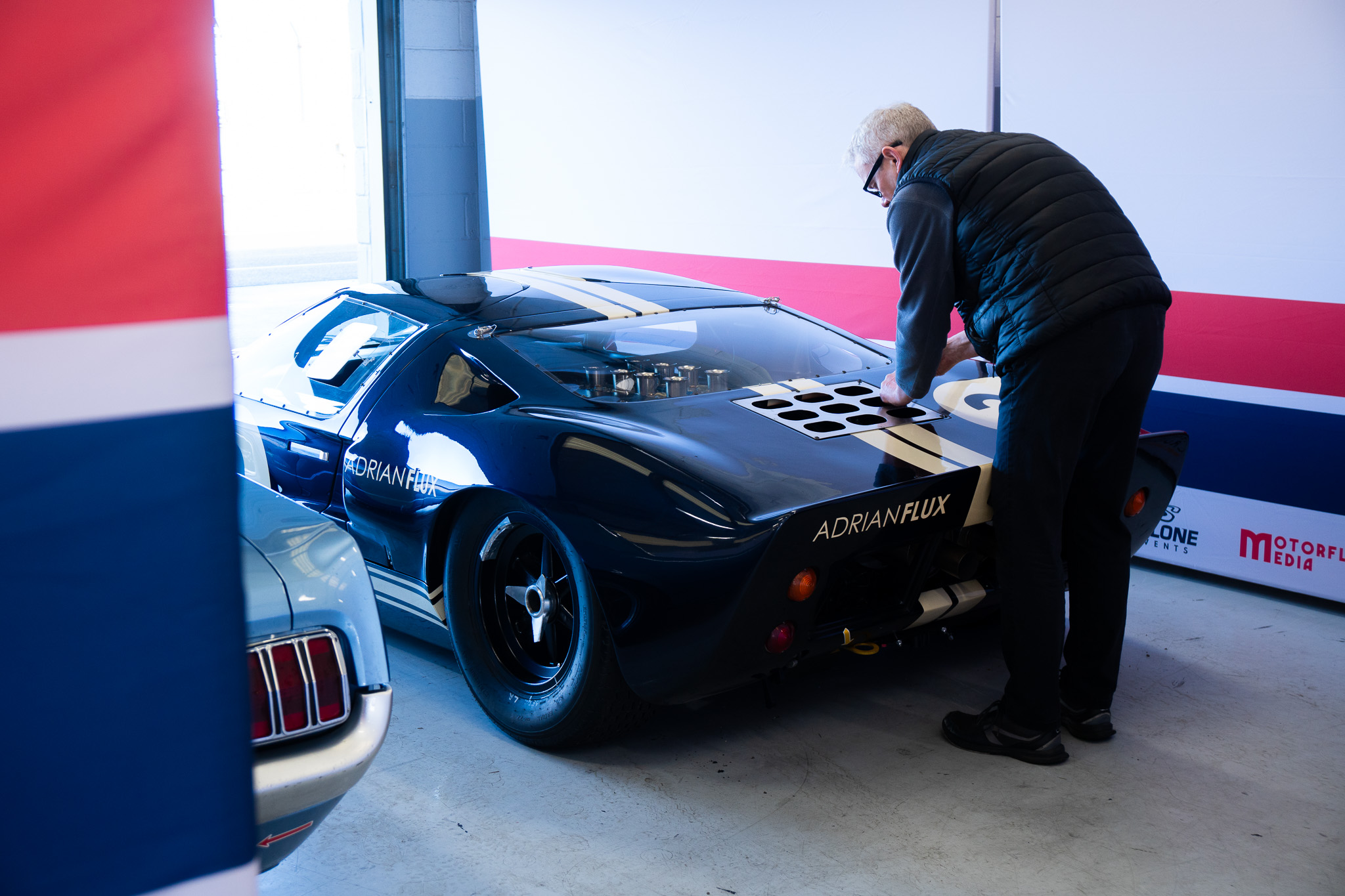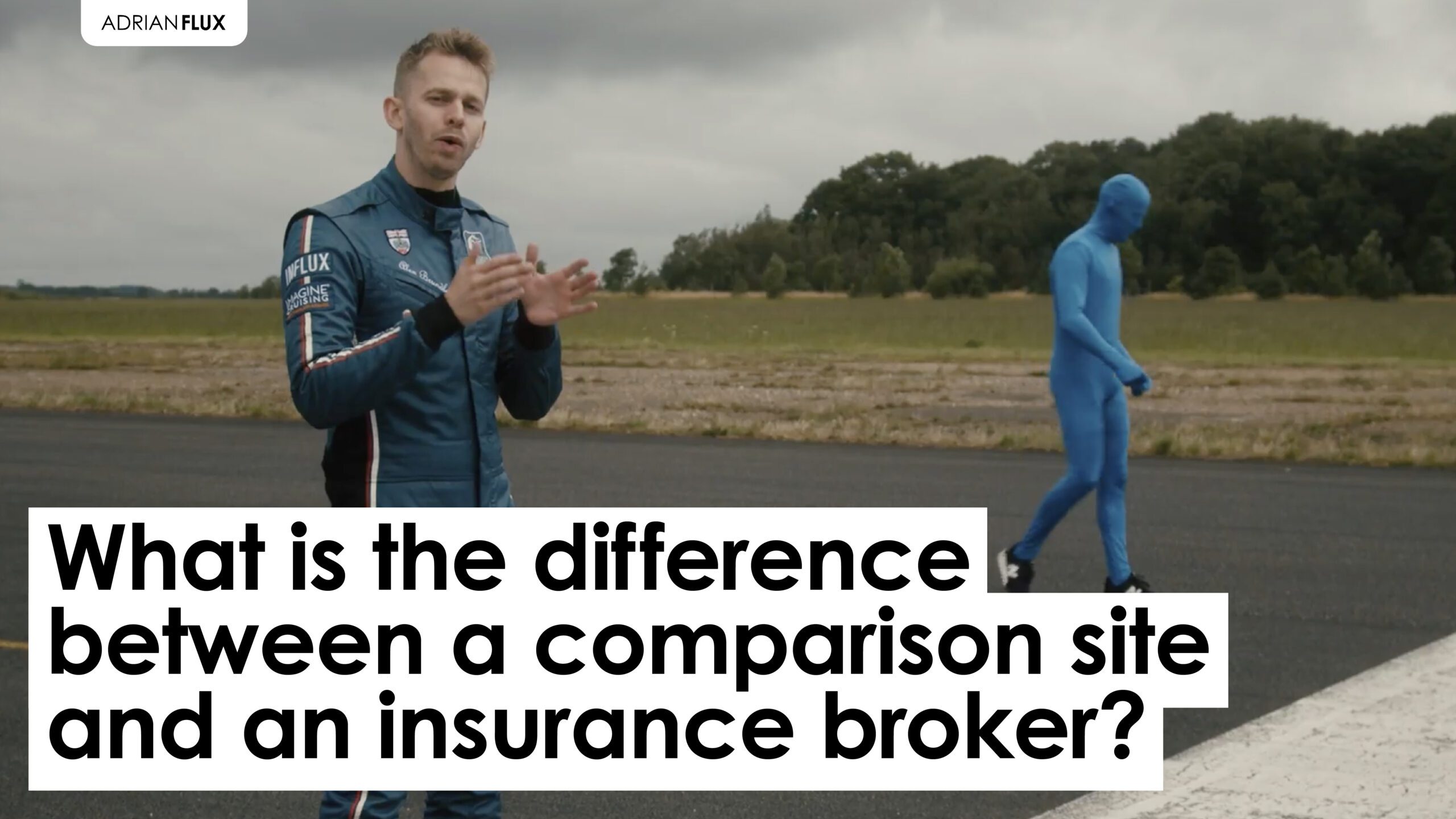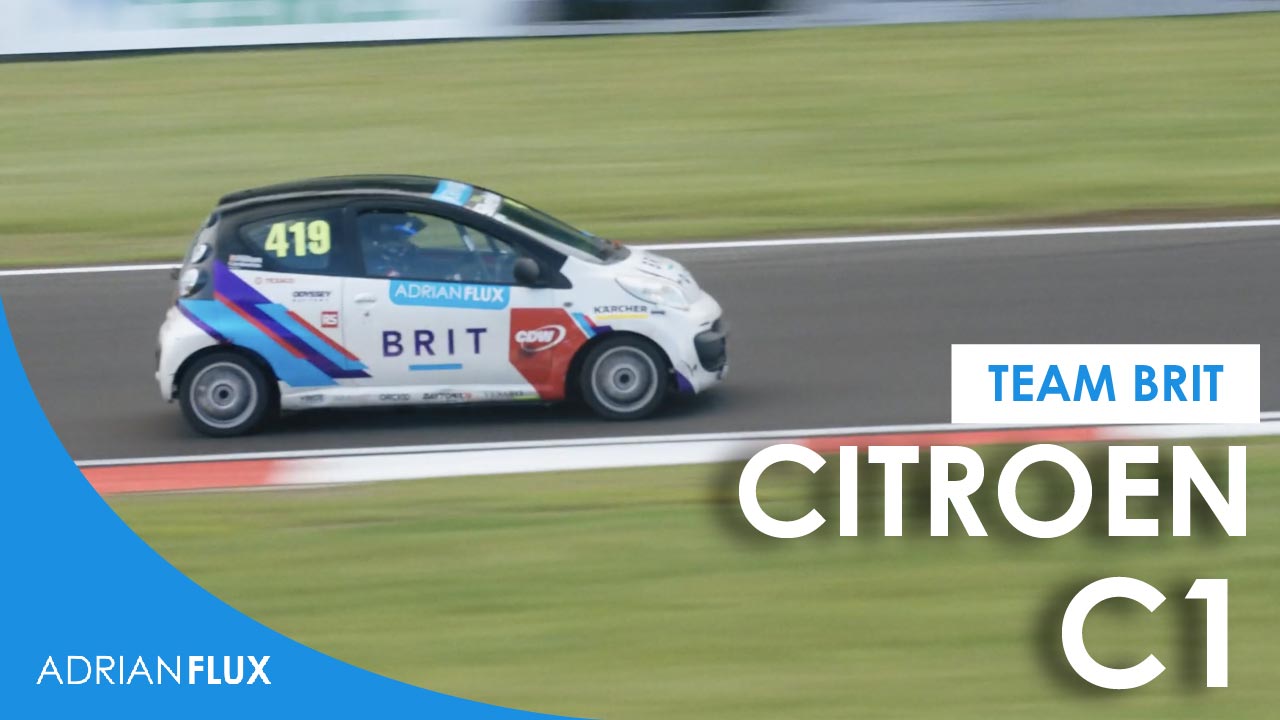As the whole of the UK – and almost the whole planet – is asked to stay at home, people are quickly turning to online versions of their favourite sports. These are known as esports.
Simulator-style software is actually becoming a stand-in for the real thing as people are keen to watch their heroes compete. Not only that, for some esports people can actually compete in the same arena as those heroes.
Many of us have looked on and wondered what it might take to get involved, how much it costs, and whether it IS really like being a race driver. Whether it is serious, or all just a bit of fun.
More than just a game
A lot of sports have a corresponding game that people can play at home. Football, cricket, golf etc. But the one sport that can get incredibly close to the real thing is motorsport.
Rather than simply pushing a button to perform a certain action or trick, you can have a simulator-style setup in your own home complete with pedals, steering wheel and even a manual gearbox if you like. Add in the same set-up changes to your suspension, aerodynamics, gearing etc that you get in the real world and these sims are incredibly effective. A lot of the professional Formula One teams will have a simulator to train drivers, get used to new track, and test changes to the car. Some will have dedicated test drivers for simulators, too.
And it’s not just F1. We had a chance to sample the BMR BTCC team’s sim for a video last year, for example.

During lockdown we’ve seen streamed races with everything from F1 racers using the latest F1 game, to F1 and motorsport legends in 70s cars, and also the chance for the public to race those legends and contemporary racing drivers, too.
We also see competitions and prizes, and the chance for sim racers to go on to sample the real thing if they prove they’re good enough. The Formula E #raceathome charity championship currently taking place, for example, where the winner will sample a real Formula E car.
It also enables professional drivers to challenge the public, like when Alex Brundle challenged the public to beat his Nürburgring laptime in the same car on GT Sport.
The backing of the big names in sport, like Formula 1, lends a kudos to these simulators that no other sport can offer.
But not all sims are the same. The more you spend, the more accurate or tailored a sim can be, but you don’t need to spend loads to join in the fun.
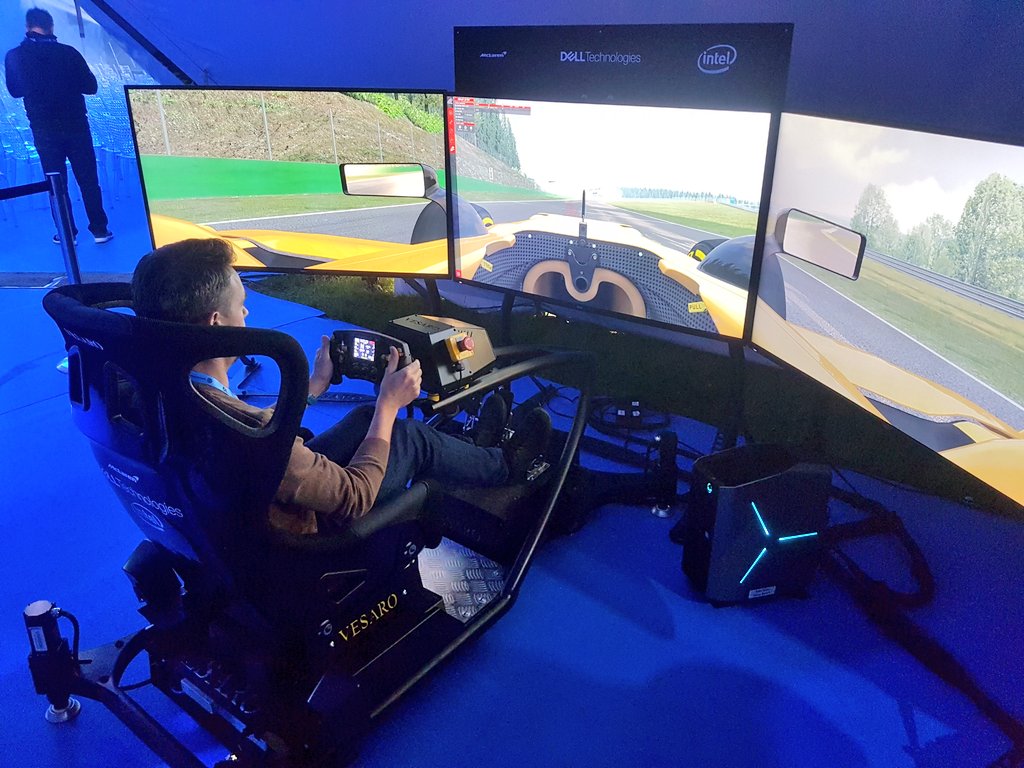
Personally, I’ve been lucky enough to sample an incredible range. From the early days of gaming using a joystick back in the ‘80s, through modern consoles with steering wheels and pedals, high-spec simulators with moving seats like the one Dell brought along to PT-19, and have also done some tyre testing on the £million+ simulator used by car manufacturers and race teams at Ansible Motion.
I even had an F1 simulator at my wedding. But I’m far from being an expert. For that reason, I spoke to two professional race drivers who are getting to grips with sim racing, as well as two established sim racers to get their take on everything technical.
The Professionals
Alex Brundle
As mentioned above, Alex has taken to challenging the public on GT Sport. For that challenge you didn’t need a ‘sim’ as such, just the console, game and a control pad. But to really get close to the way Alex could lap this challenging circuit, a steering wheel and pedals could help.

We asked Alex a few questions about racing online, compared to racing in the real world.
What’s the biggest difference between online racing and real life?
“A lot of sims are increasingly close to the real life ‘hand to eye’ challenge of driving the car and certainly there is pressure for any sim driver who is taking things seriously and keen to advance themselves. It adds something, you feel sharper straight out of the sim.
“In terms of endurance racing I think the sheer violence and human challenge of driving the real car is something that is quite hard to capture. Particularly a car with power and downforce over a long race takes a certain ‘oomph’!
“At Le Mans or the Nürburgring 24 sometimes it has been dry for 10 hours and you have to jump in at midnight as the rain comes down and keep the car in the road.
“A tyre/suspension/gearbox part can fail and you have to keep the car out of the wall somehow or preferably use your experience to predict the failure if the car doesn’t feel right and do something about it before it happens.
“Your teammate could cry ‘Enough!’ 15 hours in and you have to drive 20% more of the 24 hours than you planned. Or simply qualifying with rubber on the circuit when the car can go a theoretical 4,5,6 seconds faster than you have ever been before, and you have to deliver it on one lap there and then, without preparing.
“In the middle of our overall podium finishing run at Le Mans in 2017, I was woken and put in the car halfway through the race to diagnose and tackle an evolving electrical problem from the driver’s seat, while trying to maintain our position, using the various menus, maps and contingency options in the car.
“You are going seriously fast and it tends to be always in some kind of suboptimal condition as the seconds tick. It’s a messy, rough challenge and it’s quite hard to completely simulate that experience really.
“That said, the incredible coordination of Esports drivers is incredibly impressive and probably a more developed skill than in most drivers and at times when we cannot race in reality I’m glad we have the sim to keep our motorsport fire burning.”

Can upcoming race drivers use sims to fully prepare for being a race driver, or does it mean they miss out on a lot of off-track skills?
“It’s a fabulous tool especially with how customisable sims are now and accessible. I think a lot depends on the quality of your simulation tools available. The McLaren F1 sim is not the same preparation as Sega Rally championship on the Sega Mega Drive of my youth! (love that game)
“Off track skills are not really difficult to master and are pretty general to any career. Modern drivers are mostly prepared for working in teams and with media.
“What’s required of us is pretty basic: Turn up on time, work with the people around you and remember you are always on show, professional esports racers have all of these skills for example. In my experience the compromises teams will make to put a fast driver in the car are also considerable!
“Almost every team I have driven for has had some kind of simulation platform and we use them a lot. Through all of the work I’ve done, I’ve not seen evidence that simulator performance is an indicator of absolute speed on track, at least in the series I have raced. Even on a professional system a race team might use, the fastest driver on the sim is almost never the fastest driver when you actually arrive at the circuit for the race event.
“What home sims offer is a great way to engage with people, especially younger people and ignite a passion for our sport. A great way to get more people involved and a new platform for esports which I see as a forum all of itself. So we should participate, entertain and connect with the people who are passionate about that.”
Is it easy for you to switch to racing online, or was it quite strange?
“I am ‘decent’ at Gran Turismo and have done a fair bit of racing there. I challenged the ‘Twitter universe’ to beat me around the Nürburgring on GT Sport a few weeks ago and the response was pretty impressive and in great spirit. We had fun!
“I know a lot of people are quite picky in terms of what they would pick to be considered a ‘real’ simulation though. I’m going to have a crack at the ‘iRacing Le Mans 24 hours’, which should keep me a little sharper in the break. I might stream my first efforts for comedy value, but I’m hoping I can get my head around it quickly. I’m going to take it seriously and see what the time investment is to be at a good level.
“I chatted with some of the Williams esports drivers and some established sim drivers. The community has been really friendly, and given me a leg up, because I’m not a computer whizz and some of the car setup directions are really quirky!”
“One thing sims are really good for is practicing versatility between different disciplines and learning to adapt quickly to disciplines. Which will be really good for my upcoming year driving a load of quirky powerful classics alongside the prototype racing.”
“I might not get to jump in those cars until the race events themselves. So you have to get your head around their foibles quickly.
“You also have to have a little patience with some of the driving standards! I should give Jason a call and ask him how to get through turn 1 on a GT Sport open Lobby, I’m sure a bit of BTCC knowledge would be handy there.”
Jason Plato
The Jason that Alex is talking about, of course, is the inimitable Jason Plato. Star of elbows-out racing in the British Touring Car Championship (BTCC) and incredibly experienced on-track.

We asked Jason for his opinions of this new style of racing, too, as he tackles the PMR eSeries Powered By NXTGEN and the Legends Trophy on The Race.
What are your first impressions of racing with people across the world in their own houses?
“I have to say it’s pretty cool, I love technology but for some reason I have not until last week got into the sim racing world. It has so far proven to be very immersive, very addictive and very frustrating in equal measures!
“I’m still experimenting with the vast array of sim rig settings that I have at a mouse click, it’s fair to say that at this early stage I am somewhat behind the curve and I have lots to learn.”
Has someone with a long career in motorsport got a big advantage in terms of understanding race craft, vehicle dynamics etc; or is it in fact a disadvantage when you’ve got all that real-world experience and then applying it to a virtual world with no G-force or risk of crashing etc?
“In all honesty I don’t think my real-world experience counts for much at the level I’m at the moment, it is certainly giving me plenty of frustration! In the couple of races I have done so far the car setups have been locked so the only changes you can make is to your rig, I just can’t seem to find the correct settings so I can make the car do what others with more sim experience can.”
Do you enjoy racing in the Legends Trophy online against other superstar drivers like Jenson Button, Emerson Fittipaldi etc?
“The Legends event was just great to be invited into, it’s a real select little community, everyone is truly a great driver and all tasted success on the highest stages. The competition is fierce but with fun.”
Could you see a talented young driver finding their way onto motorsport through sim racing that may have struggled for budgets to race in the real world? Or are there too many other things a driver needs to learn like how to handle themselves in the media, and get sponsors etc?
“It has already been done, A young Brit called Jann Mardenborough won the inaugural GT Academy Sim competition and has gone onto great things ever since. He is a fully paid professional racing driver in the real world and living out the dream.”
We also asked Alex Brundle about the future and whether he could see esports becoming more popular than the real-life racing we all love.
Alex, could esports/sim racing ever overtake the real thing in your opinion?
“I do wonder why esports try to emulate the real thing. Can you imagine what racing could look like if we could draw a bubble over Silverstone and decided ‘which physics’ we should have that day. It would be an incredible spectacle.
“I think that would be the only way that esports could overtake real racing in immediate terms, just by being something different and vastly more entertaining.
“However if we can simply no longer race real cars, then certainly esports will be the only show in town. I think it would be a bit of a shame if any motorsport fan, virtual or otherwise ‘wished death’ upon the real sport which inspired us so much that we literally generated an industry to simulate it. But I’m sure there will be those with vested interests thinking that way!
“I’d like to think we have enough collective passion for racing that we will get together and find a solution to be putting foot to floor and tyre to tarmac again in 2020 and beyond!”
The Sim Racers
To really get to grips with sim racing it’s very handy to lean on people who are already doing it successfully. For that reason, we had a nice chat to Cammie Sturch and Matt Beard, both of whom have YouTube channels and are very established on the sim racing scene.
Cammie Sturch

Cammie races as part of Ford’s ‘Team Fordzilla’ racing team, and has established herself as a force to be reckoned with both on the track and in the world of YouTube.
Cammie, what’s the very minimum equipment you need to get started?
“The absolute minimum you need to get started simracing? Gran Turismo Sport or Forza Racing will be your most affordable options and you can start with just the console and the controller.
“There are also multiple wheels that now support PS4 and Xbox as well as PCs offered by brands such as Thrustmaster, which start from around £90. I actually put together a short video detailing which simracing wheels are ideal for newcomers.”
If you had a theoretical £2000 budget to buy a PC, wheel/pedals, monitors, seat and accessories like a headset etc, where would the money go?
“That’s about what I spent in total on my set up, so I’ll share below what I run! I’d always recommend building your own PC if you can as it’s a great way to save money and is surprisingly simple to do these days! I run what is considered a mid- to high-end computer, with a mid-range processor, but really packing a punch with the graphics – this is somewhat vital if you intend to have an Oculus/HTC Vive set up!
“In terms of steering and pedals I would also recommend either the Fanatec CSL Elite F1 or the Thrustmaster TS-PC Racer if you can spend £500-£800 on simulator kit, as they’re built far more solidly than the £100-£300 sets that can develop problems through heavy usage.”
Here’s Cammie’s current kit:
- AMD Ryzen 5 – 2600
- 16GB RAM
- 1TB HDD + 240GB SSD
- Nvidia GeForce RTX 2070
- 55″ 4K Samsung 120hz TV
- Fanatec CSL Elite F1
- Playseat Challenge Racing Seat
What would be your money-no-object setup?
“It’d likely be fairly similar to what I have now, but with a couple of extra 55″ screens for that triple screen surround set up!
“I wouldn’t mind a better and more durable racing seat! I currently have a Playseat Challenge which is a great budget racing sim seat to bolt your steering wheel and pedals onto, but it’s light weight, portable and doesn’t have the durability that the more top of the line Playseats have.
“I know some people would like the sim set ups with the hydraulics that throw you around but I’m personally not too sold on the idea of those – unless maybe it was rally driving but I’m a circuit racer myself.”
How does it feel to beat people from all over the world?
“When you get into sim racing, you quickly realise how talented sim racers are – and whilst you felt like numero uno in the single player races, you very soon realise there are drivers better than you – finding time in corners where it seems impossible.
“Previous pedigree can’t help you in sim racing – as Carlos Sainz found out in Gran Turismo Sport; he’s chasing after those tenths of a second to catch up with the leaders in the online events. Arguably I’d say the real drivers come into sim racing with a distinct disadvantage – coming from racing where they feel everything their car is doing – to then jumping into a motionless simulator where you can’t feel anything through your body and are wholly reliant on visuals.
“I recently made the step from iRacing’s Formula Renault 2.0 category where last year I completed the summer season 17th out of over 1500 drivers, placing 3rd in Division 3. Since making the step to Formula 3, I quickly noticed I’ve gone from being a big fish in a small pond to a small fish in a big pond and in these early days of F3 for me, have been a firm midfield runner in the top split events.
“One high point was finishing ahead of Red Bull’s Alex Albon in a short F3 Sprint race, he started on pole but to be fair to him he did spin on the first lap and lost his rear wing – all I had to do was finish the race, of which I finished 9th out of 24 runners.
“One rather feelgood factor is Gran Turismo Sport telling me I’m in the top 1% of all registered players.”
Matt Beard

YouTuber Matt Beard has become renowned for his racing videos on his channel Matt212, and tackling parts of racing games to give people a flavour of what to expect.
How much time and effort would a sim racer need to put in to really be successful?
“Sim racing over the last few years has really exploded, we’re seeing now millions of dollars put into events and the industry is growing at an increasing rate at the moment, especially with the situation currently around the world.
“With this increased exposure top drivers now are putting at least 5/6hrs a day into practice. A lot of the big events now require a time trial event to qualify, a fairly simple one-car, one-track, fastest time wins approach, and I’ve known people put in upwards of 10/12 hours a day just to try and achieve the top times in these events.”
Wow so it’s a lot of work! Is it true that more money means faster racing by using better equipment?
“There has for a long time been a misunderstanding about more expensive equipment makes you faster, there is (in my experience) no direct link between money and laptime in most sims.
“With that being said, more expensive equipment generally makes the experience more immersive, things such as load cell brakes (which you can be much more precise with over standard pedals that get bundled in with most wheels) will generally make you more consistent, but you don’t need to go out and spend £3000 just to be quick. It can be achieved with a simple £150 wheel and pedal set like I used to use, we’ve even seen some people (Marcel Kiefer is a great example) qualify for big events with a controller.
“So no, expensive technology doesn’t make you faster, practice does.”
What software should a newcomer start with?
“In terms of beginners to sim racing it depends on what platform you are on, on Xbox personally I still recommend Forza Motorsport. It’s a great tool to learn the basics of racing, how to brake, how to accelerate out of a corner, positioning of the car and every other basic skill that can then be transferred into other games.
“On PlayStation GT Sport has a lot of great in-game courses and challenges to help you learn how to race and its matchmaking system works really well to provide good close racing with people around your pace.
“PC is definitely the most difficult, as there is a lot to choose from. Personally, I’d say the original Assetto Corsa is the pick – the game comes with a fair bit of content for a very good price (it can be picked up now for under £10) and there are literally thousands of free mods online that really do add to the games re-playability.”
Where would you be without online racing, and what do you think you’d be doing?
“Honestly, without online racing I’d have no idea where I would be, it’s been a fair chunk of my life since I was about 14.
“Most of the people I keep in touch with and talk to on a regular basis I’ve met through online racing, it’s the reason I originally started my YouTube channel, I’ve always played racing games from about the age of four and although many games offer great campaigns and computer opponents to race against, nothing comes close to beating other people from around the world!”
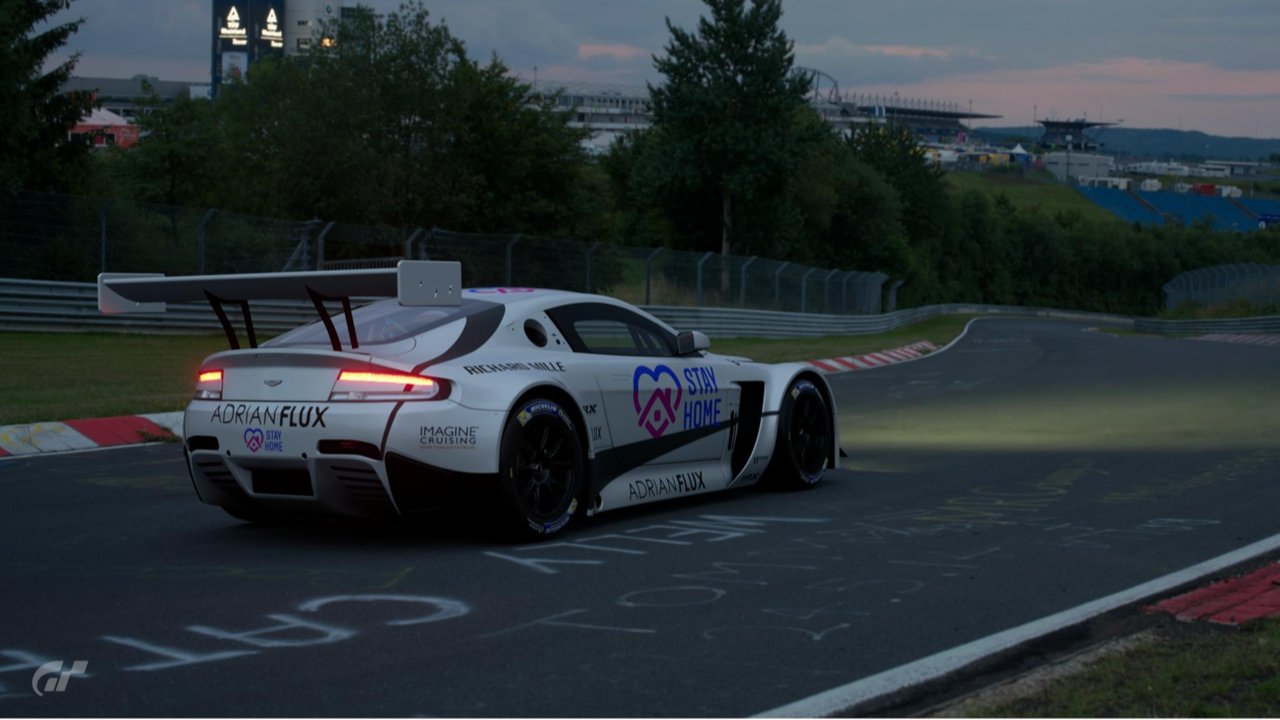
Will we see you online?
Sim racing has been given a very firm thumbs-up from professional racers and sim racers alike, and it’s reassuring to hear that although a bigger budget might mean a more immersive experience, it certainly doesn’t mean you can’t give it a go – and be fast!
If you fancy trying it let us know what sim setup you go for, and keep an eye out for Alex, Jason, Cammie and Matt on a virtual race circuit some time soon.
As the whole of the UK – and almost the whole planet – is asked to stay at home, people are quickly turning to online versions of their favourite sports. These are known as esports.
Simulator-style software is actually becoming a stand-in for the real thing as people are keen to watch their heroes compete. Not only that, for some esports people can actually compete in the same arena as those heroes.
Many of us have looked on and wondered what it might take to get involved, how much it costs, and whether it IS really like being a race driver. Whether it is serious, or all just a bit of fun.
More than just a game
A lot of sports have a corresponding game that people can play at home. Football, cricket, golf etc. But the one sport that can get incredibly close to the real thing is motorsport.
Rather than simply pushing a button to perform a certain action or trick, you can have a simulator-style setup in your own home complete with pedals, steering wheel and even a manual gearbox if you like. Add in the same set-up changes to your suspension, aerodynamics, gearing etc that you get in the real world and these sims are incredibly effective. A lot of the professional Formula One teams will have a simulator to train drivers, get used to new track, and test changes to the car. Some will have dedicated test drivers for simulators, too.
And it’s not just F1. We had a chance to sample the BMR BTCC team’s sim for a video last year, for example.

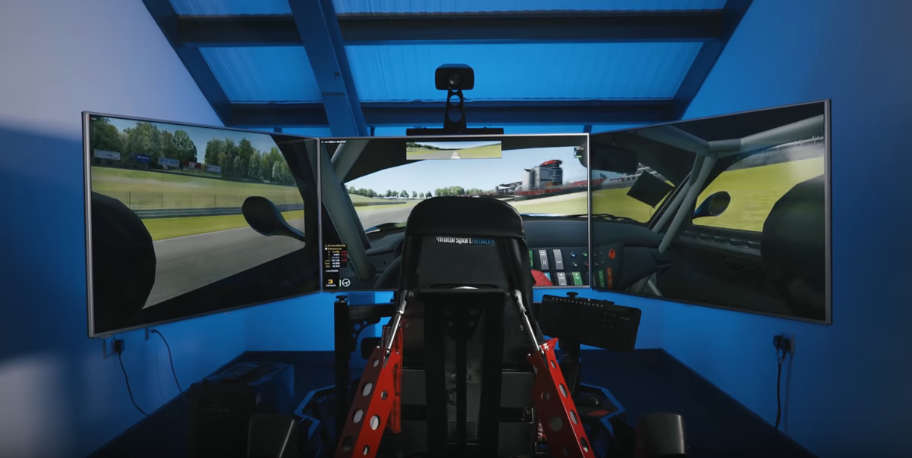
During lockdown we’ve seen streamed races with everything from F1 racers using the latest F1 game, to F1 and motorsport legends in 70s cars, and also the chance for the public to race those legends and contemporary racing drivers, too.
We also see competitions and prizes, and the chance for sim racers to go on to sample the real thing if they prove they’re good enough. The Formula E #raceathome charity championship currently taking place, for example, where the winner will sample a real Formula E car.
It also enables professional drivers to challenge the public, like when Alex Brundle challenged the public to beat his Nürburgring laptime in the same car on GT Sport.
The backing of the big names in sport, like Formula 1, lends a kudos to these simulators that no other sport can offer.
But not all sims are the same. The more you spend, the more accurate or tailored a sim can be, but you don’t need to spend loads to join in the fun.

Personally, I’ve been lucky enough to sample an incredible range. From the early days of gaming using a joystick back in the ‘80s, through modern consoles with steering wheels and pedals, high-spec simulators with moving seats like the one Dell brought along to PT-19, and have also done some tyre testing on the £million+ simulator used by car manufacturers and race teams at Ansible Motion.
I even had an F1 simulator at my wedding. But I’m far from being an expert. For that reason, I spoke to two professional race drivers who are getting to grips with sim racing, as well as two established sim racers to get their take on everything technical.
The Professionals
Alex Brundle
As mentioned above, Alex has taken to challenging the public on GT Sport. For that challenge you didn’t need a ‘sim’ as such, just the console, game and a control pad. But to really get close to the way Alex could lap this challenging circuit, a steering wheel and pedals could help.

We asked Alex a few questions about racing online, compared to racing in the real world.
What’s the biggest difference between online racing and real life?
“A lot of sims are increasingly close to the real life ‘hand to eye’ challenge of driving the car and certainly there is pressure for any sim driver who is taking things seriously and keen to advance themselves. It adds something, you feel sharper straight out of the sim.
“In terms of endurance racing I think the sheer violence and human challenge of driving the real car is something that is quite hard to capture. Particularly a car with power and downforce over a long race takes a certain ‘oomph’!
“At Le Mans or the Nürburgring 24 sometimes it has been dry for 10 hours and you have to jump in at midnight as the rain comes down and keep the car in the road.
“A tyre/suspension/gearbox part can fail and you have to keep the car out of the wall somehow or preferably use your experience to predict the failure if the car doesn’t feel right and do something about it before it happens.
“Your teammate could cry ‘Enough!’ 15 hours in and you have to drive 20% more of the 24 hours than you planned. Or simply qualifying with rubber on the circuit when the car can go a theoretical 4,5,6 seconds faster than you have ever been before, and you have to deliver it on one lap there and then, without preparing.
“In the middle of our overall podium finishing run at Le Mans in 2017, I was woken and put in the car halfway through the race to diagnose and tackle an evolving electrical problem from the driver’s seat, while trying to maintain our position, using the various menus, maps and contingency options in the car.
“You are going seriously fast and it tends to be always in some kind of suboptimal condition as the seconds tick. It’s a messy, rough challenge and it’s quite hard to completely simulate that experience really.
“That said, the incredible coordination of Esports drivers is incredibly impressive and probably a more developed skill than in most drivers and at times when we cannot race in reality I’m glad we have the sim to keep our motorsport fire burning.”
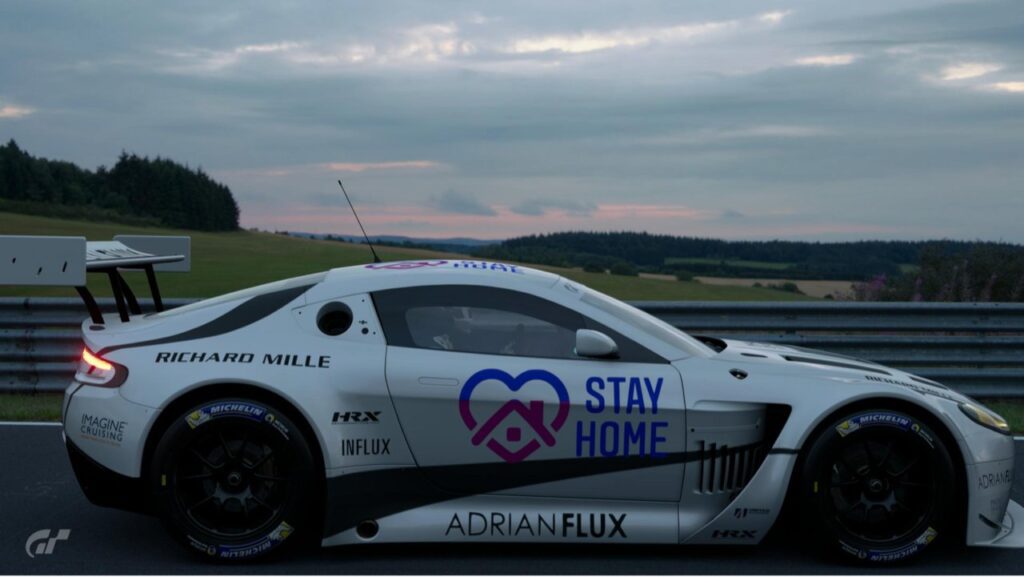
Can upcoming race drivers use sims to fully prepare for being a race driver, or does it mean they miss out on a lot of off-track skills?
“It’s a fabulous tool especially with how customisable sims are now and accessible. I think a lot depends on the quality of your simulation tools available. The McLaren F1 sim is not the same preparation as Sega Rally championship on the Sega Mega Drive of my youth! (love that game)
“Off track skills are not really difficult to master and are pretty general to any career. Modern drivers are mostly prepared for working in teams and with media.
“What’s required of us is pretty basic: Turn up on time, work with the people around you and remember you are always on show, professional esports racers have all of these skills for example. In my experience the compromises teams will make to put a fast driver in the car are also considerable!
“Almost every team I have driven for has had some kind of simulation platform and we use them a lot. Through all of the work I’ve done, I’ve not seen evidence that simulator performance is an indicator of absolute speed on track, at least in the series I have raced. Even on a professional system a race team might use, the fastest driver on the sim is almost never the fastest driver when you actually arrive at the circuit for the race event.
“What home sims offer is a great way to engage with people, especially younger people and ignite a passion for our sport. A great way to get more people involved and a new platform for esports which I see as a forum all of itself. So we should participate, entertain and connect with the people who are passionate about that.”
Is it easy for you to switch to racing online, or was it quite strange?
“I am ‘decent’ at Gran Turismo and have done a fair bit of racing there. I challenged the ‘Twitter universe’ to beat me around the Nürburgring on GT Sport a few weeks ago and the response was pretty impressive and in great spirit. We had fun!
“I know a lot of people are quite picky in terms of what they would pick to be considered a ‘real’ simulation though. I’m going to have a crack at the ‘iRacing Le Mans 24 hours’, which should keep me a little sharper in the break. I might stream my first efforts for comedy value, but I’m hoping I can get my head around it quickly. I’m going to take it seriously and see what the time investment is to be at a good level.
“I chatted with some of the Williams esports drivers and some established sim drivers. The community has been really friendly, and given me a leg up, because I’m not a computer whizz and some of the car setup directions are really quirky!”
“One thing sims are really good for is practicing versatility between different disciplines and learning to adapt quickly to disciplines. Which will be really good for my upcoming year driving a load of quirky powerful classics alongside the prototype racing.”
“I might not get to jump in those cars until the race events themselves. So you have to get your head around their foibles quickly.
“You also have to have a little patience with some of the driving standards! I should give Jason a call and ask him how to get through turn 1 on a GT Sport open Lobby, I’m sure a bit of BTCC knowledge would be handy there.”
Jason Plato
The Jason that Alex is talking about, of course, is the inimitable Jason Plato. Star of elbows-out racing in the British Touring Car Championship (BTCC) and incredibly experienced on-track.

We asked Jason for his opinions of this new style of racing, too, as he tackles the PMR eSeries Powered By NXTGEN and the Legends Trophy on The Race.
What are your first impressions of racing with people across the world in their own houses?
“I have to say it’s pretty cool, I love technology but for some reason I have not until last week got into the sim racing world. It has so far proven to be very immersive, very addictive and very frustrating in equal measures!
“I’m still experimenting with the vast array of sim rig settings that I have at a mouse click, it’s fair to say that at this early stage I am somewhat behind the curve and I have lots to learn.”
Has someone with a long career in motorsport got a big advantage in terms of understanding race craft, vehicle dynamics etc; or is it in fact a disadvantage when you’ve got all that real-world experience and then applying it to a virtual world with no G-force or risk of crashing etc?
“In all honesty I don’t think my real-world experience counts for much at the level I’m at the moment, it is certainly giving me plenty of frustration! In the couple of races I have done so far the car setups have been locked so the only changes you can make is to your rig, I just can’t seem to find the correct settings so I can make the car do what others with more sim experience can.”
Do you enjoy racing in the Legends Trophy online against other superstar drivers like Jenson Button, Emerson Fittipaldi etc?
“The Legends event was just great to be invited into, it’s a real select little community, everyone is truly a great driver and all tasted success on the highest stages. The competition is fierce but with fun.”
Could you see a talented young driver finding their way onto motorsport through sim racing that may have struggled for budgets to race in the real world? Or are there too many other things a driver needs to learn like how to handle themselves in the media, and get sponsors etc?
“It has already been done, A young Brit called Jann Mardenborough won the inaugural GT Academy Sim competition and has gone onto great things ever since. He is a fully paid professional racing driver in the real world and living out the dream.”
We also asked Alex Brundle about the future and whether he could see esports becoming more popular than the real-life racing we all love.
Alex, could esports/sim racing ever overtake the real thing in your opinion?
“I do wonder why esports try to emulate the real thing. Can you imagine what racing could look like if we could draw a bubble over Silverstone and decided ‘which physics’ we should have that day. It would be an incredible spectacle.
“I think that would be the only way that esports could overtake real racing in immediate terms, just by being something different and vastly more entertaining.
“However if we can simply no longer race real cars, then certainly esports will be the only show in town. I think it would be a bit of a shame if any motorsport fan, virtual or otherwise ‘wished death’ upon the real sport which inspired us so much that we literally generated an industry to simulate it. But I’m sure there will be those with vested interests thinking that way!
“I’d like to think we have enough collective passion for racing that we will get together and find a solution to be putting foot to floor and tyre to tarmac again in 2020 and beyond!”
The Sim Racers
To really get to grips with sim racing it’s very handy to lean on people who are already doing it successfully. For that reason, we had a nice chat to Cammie Sturch and Matt Beard, both of whom have YouTube channels and are very established on the sim racing scene.
Cammie Sturch

Cammie races as part of Ford’s ‘Team Fordzilla’ racing team, and has established herself as a force to be reckoned with both on the track and in the world of YouTube.
Cammie, what’s the very minimum equipment you need to get started?
“The absolute minimum you need to get started simracing? Gran Turismo Sport or Forza Racing will be your most affordable options and you can start with just the console and the controller.
“There are also multiple wheels that now support PS4 and Xbox as well as PCs offered by brands such as Thrustmaster, which start from around £90. I actually put together a short video detailing which simracing wheels are ideal for newcomers.”
If you had a theoretical £2000 budget to buy a PC, wheel/pedals, monitors, seat and accessories like a headset etc, where would the money go?
“That’s about what I spent in total on my set up, so I’ll share below what I run! I’d always recommend building your own PC if you can as it’s a great way to save money and is surprisingly simple to do these days! I run what is considered a mid- to high-end computer, with a mid-range processor, but really packing a punch with the graphics – this is somewhat vital if you intend to have an Oculus/HTC Vive set up!
“In terms of steering and pedals I would also recommend either the Fanatec CSL Elite F1 or the Thrustmaster TS-PC Racer if you can spend £500-£800 on simulator kit, as they’re built far more solidly than the £100-£300 sets that can develop problems through heavy usage.”
Here’s Cammie’s current kit:
- AMD Ryzen 5 – 2600
- 16GB RAM
- 1TB HDD + 240GB SSD
- Nvidia GeForce RTX 2070
- 55″ 4K Samsung 120hz TV
- Fanatec CSL Elite F1
- Playseat Challenge Racing Seat
What would be your money-no-object setup?
“It’d likely be fairly similar to what I have now, but with a couple of extra 55″ screens for that triple screen surround set up!
“I wouldn’t mind a better and more durable racing seat! I currently have a Playseat Challenge which is a great budget racing sim seat to bolt your steering wheel and pedals onto, but it’s light weight, portable and doesn’t have the durability that the more top of the line Playseats have.
“I know some people would like the sim set ups with the hydraulics that throw you around but I’m personally not too sold on the idea of those – unless maybe it was rally driving but I’m a circuit racer myself.”
How does it feel to beat people from all over the world?
“When you get into sim racing, you quickly realise how talented sim racers are – and whilst you felt like numero uno in the single player races, you very soon realise there are drivers better than you – finding time in corners where it seems impossible.
“Previous pedigree can’t help you in sim racing – as Carlos Sainz found out in Gran Turismo Sport; he’s chasing after those tenths of a second to catch up with the leaders in the online events. Arguably I’d say the real drivers come into sim racing with a distinct disadvantage – coming from racing where they feel everything their car is doing – to then jumping into a motionless simulator where you can’t feel anything through your body and are wholly reliant on visuals.
“I recently made the step from iRacing’s Formula Renault 2.0 category where last year I completed the summer season 17th out of over 1500 drivers, placing 3rd in Division 3. Since making the step to Formula 3, I quickly noticed I’ve gone from being a big fish in a small pond to a small fish in a big pond and in these early days of F3 for me, have been a firm midfield runner in the top split events.
“One high point was finishing ahead of Red Bull’s Alex Albon in a short F3 Sprint race, he started on pole but to be fair to him he did spin on the first lap and lost his rear wing – all I had to do was finish the race, of which I finished 9th out of 24 runners.
“One rather feelgood factor is Gran Turismo Sport telling me I’m in the top 1% of all registered players.”
Matt Beard

YouTuber Matt Beard has become renowned for his racing videos on his channel Matt212, and tackling parts of racing games to give people a flavour of what to expect.
How much time and effort would a sim racer need to put in to really be successful?
“Sim racing over the last few years has really exploded, we’re seeing now millions of dollars put into events and the industry is growing at an increasing rate at the moment, especially with the situation currently around the world.
“With this increased exposure top drivers now are putting at least 5/6hrs a day into practice. A lot of the big events now require a time trial event to qualify, a fairly simple one-car, one-track, fastest time wins approach, and I’ve known people put in upwards of 10/12 hours a day just to try and achieve the top times in these events.”
Wow so it’s a lot of work! Is it true that more money means faster racing by using better equipment?
“There has for a long time been a misunderstanding about more expensive equipment makes you faster, there is (in my experience) no direct link between money and laptime in most sims.
“With that being said, more expensive equipment generally makes the experience more immersive, things such as load cell brakes (which you can be much more precise with over standard pedals that get bundled in with most wheels) will generally make you more consistent, but you don’t need to go out and spend £3000 just to be quick. It can be achieved with a simple £150 wheel and pedal set like I used to use, we’ve even seen some people (Marcel Kiefer is a great example) qualify for big events with a controller.
“So no, expensive technology doesn’t make you faster, practice does.”
What software should a newcomer start with?
“In terms of beginners to sim racing it depends on what platform you are on, on Xbox personally I still recommend Forza Motorsport. It’s a great tool to learn the basics of racing, how to brake, how to accelerate out of a corner, positioning of the car and every other basic skill that can then be transferred into other games.
“On PlayStation GT Sport has a lot of great in-game courses and challenges to help you learn how to race and its matchmaking system works really well to provide good close racing with people around your pace.
“PC is definitely the most difficult, as there is a lot to choose from. Personally, I’d say the original Assetto Corsa is the pick – the game comes with a fair bit of content for a very good price (it can be picked up now for under £10) and there are literally thousands of free mods online that really do add to the games re-playability.”
Where would you be without online racing, and what do you think you’d be doing?
“Honestly, without online racing I’d have no idea where I would be, it’s been a fair chunk of my life since I was about 14.
“Most of the people I keep in touch with and talk to on a regular basis I’ve met through online racing, it’s the reason I originally started my YouTube channel, I’ve always played racing games from about the age of four and although many games offer great campaigns and computer opponents to race against, nothing comes close to beating other people from around the world!”

Will we see you online?
Sim racing has been given a very firm thumbs-up from professional racers and sim racers alike, and it’s reassuring to hear that although a bigger budget might mean a more immersive experience, it certainly doesn’t mean you can’t give it a go – and be fast!
If you fancy trying it let us know what sim setup you go for, and keep an eye out for Alex, Jason, Cammie and Matt on a virtual race circuit some time soon.

